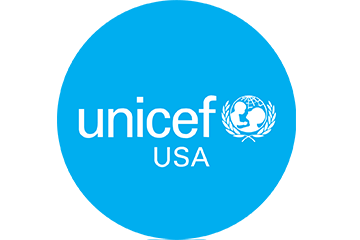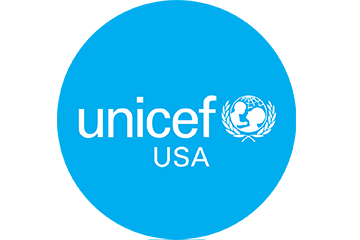Two years into the COVID-19 pandemic, the social and economic devastation is weighing most heavily on children, particularly the poorest and most marginalized. At least 68 percent of households with children have lost income since the start of the COVID-19 pandemic, according to a new report from UNICEF and the World Bank.
Impact of COVID-19 on the welfare of households with children — which presents findings from data collected in 35 countries* — notes that households with three or more children were most likely to have lost income, with more than three-quarters experiencing a reduction in earnings.
COVID-19 threatens to reverse modest progress in reduction of child poverty worldwide
Adults in nearly half of households with children said they have skipped meals due to lack of money. One in four adults living with children reported going without food for a day or longer. Around one in four adults in all households, with or without children, reported stopping working since the pandemic hit.
“The modest progress made in reducing child poverty in recent years risks being reversed in all parts of the world,” said Sanjay Wijesekera, UNICEF Director of Program Group. “Families have experienced loss at a staggering scale. While last year inflation reached its highest level in years, more than two-thirds of households with children brought in less money. Families cannot afford food or essential health care services. They cannot afford housing. It is a dire picture, and the poorest households are being pushed even deeper in poverty.”
Ayra, 12, comforts her little sister Safia, 2, while caring for her at home in Sragen, Central Java Province, Indonesia. Arya’s father, who was the breadwinner of the family, died of COVID-19 at home in December 2020. Her mother Suwarsi, 40, started to work as a street food vendor, often earning only 30,000 Indonesian rupiah, or about 2 US dollars, a day. Due to their situation, Arya sometimes has to skip school to take care of Safia.© UNICEF/UN0566453/Ose
Children are being deprived of the basics they need to thrive, including learning — in 40 percent of households, children were not engaged in any form of educational activities while their schools were closed.
In the pandemic’s uncertain earliest days, schools for more than 1.5 billion children shut their doors. While restaurants and bars have reopened in the majority of countries worldwide, more than one-third of schoolchildren live in countries with full or partial closures still in place. Every student has lost academic ground, with the poorest and those who were furthest behind already, bearing the highest price.
Pandemic school closures have pushed at-risk children further behind; millions may never return to the classroom
In low- and middle-income countries, learning losses due to school closures have left up to 70 percent of 10-year-olds unable to read or understand a simple text, up from 53 percent pre-pandemic. Millions of children may simply never return to school — some because they have lost so much ground that they are struggling to catch up, others because they are now working to support their families or have married early.
“The disruptions to education and health care for children, coupled with catastrophic out-of-pocket health expenses which affect more than 1 billion people, could put the brakes on the development of human capital — the levels of education, health and well-being people need to become productive members of society,” said Carolina Sánchez-Páramo, Global Director of Poverty and Equity for the World Bank. “This could lock in increases in inequality for generations to come, making it less likely that children will do better than their parents or grandparents.”
In Moro, a suburb of Kinshasa, Democratic Republic of Congo, Sophie Bizeku, 33, and her family are beneficiaries of a cash assistance program to mitigate the socio-economic effects of the COVID-19 pandemic. “I used part of the money for school fees for the children and the rest for food,” she said. The program was launched by UNICEF, USAID and partners in October 2020. © UNICEF/UN0507433/Dejongh
According to the report, while households with three or more children were the most likely to experience loss of income, they were also most likely to receive government assistance, with 25 percent accessing this support, as opposed to 10 percent of households without children. This helped to mitigate the impact of the crisis for families who received assistance.
Prior to the pandemic, one in six children — 356 million — were living in extreme poverty, where household members struggled to survive on less than $1.90 a day. More than 40 percent of children lived in moderate poverty. Nearly 1 billion lived in multidimensional poverty in developing countries — a figure that has risen by 10 percent as a result of the pandemic.
UNICEF and World Bank urge a rapid expansion of social protection systems, including cash transfers and universal child benefits
To help children and families living in poverty, UNICEF and the World Bank urge a rapid expansion of social protection systems. Support including cash transfer programs and the universalization of child benefits are critical investments that can help lift families out of economic distress and help them prepare for future shocks. Since the start of the pandemic, more than 200 countries or territories have introduced thousands of social protection measures, and the World Bank has supported countries with approximately $12.5 billion to implement these measures, reaching nearly 1 billion people worldwide.
UNICEF is working with partners to ensure every child receives the education and support they need to reach their full potential. Your contribution can make a difference. Please donate.
*The report’s analysis draws on information from a set of high-frequency phone surveys conducted in the following countries: Bulgaria, Burkina Faso, Cambodia, Democratic Republic of the Congo, The Republic of Congo, Croatia, Djibouti, Ethiopia, Gabon, The Gambia, Ghana, Guinea, Indonesia, Kenya, Laos, Lebanon, Madagascar, Malawi, Mali, Mauritius, Mongolia, Mozambique, Myanmar, Nigeria, Poland, Romania, Rwanda, Senegal, Sierra Leone, Solomon Islands, St. Lucia, Tajikistan, Uganda, Uzbekistan and Zimbabwe.
Top photo: In October 2020, an agent holds a little boy while registering vulnerable families in Moro, a suburb of Kinshasa in the Democratic Republic of Congo. As part of a joint project led by UNICEF, USAID and partners to mitigate the socio-economic effects of the COVID-19 pandemic, eligible households in the Nsele area received cash assistance to help them afford food and other essentials. © UNICEF/UN0513064/Dejongh





